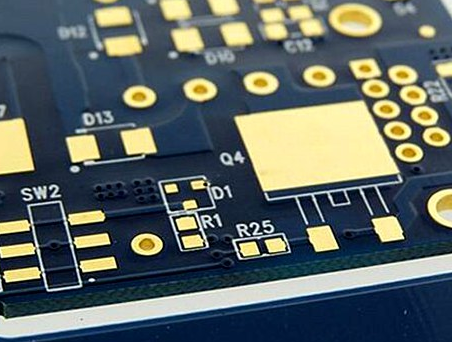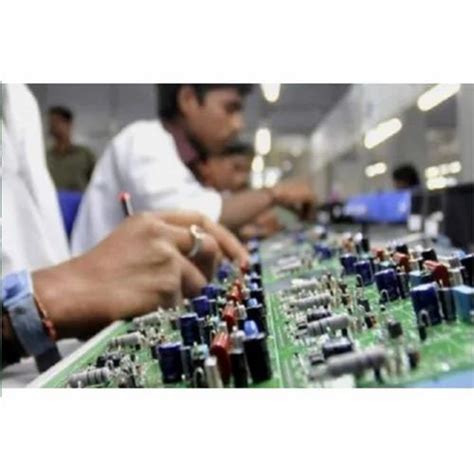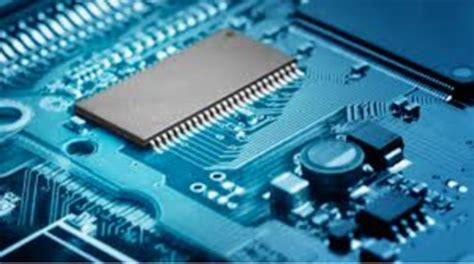Optimizing High Quality PCB Assembly for Superior Performance

Key Takeaways
In the pursuit of excellence in pcb assembly, several vital insights emerge that can guide manufacturers and engineers toward achieving optimal results. First and foremost, embracing advanced techniques in the assembly process enhances both the precision and efficiency of pcba production. Utilizing automated soldering machines, for instance, significantly reduces human error, leading to higher consistency in connection quality. Additionally, implementing rigorous quality control measures throughout the production lifecycle ensures that each component meets industry standards, ultimately boosting the reliability of the final product. The integration of innovative materials also plays a crucial role; advanced substrates and solder materials can enhance thermal stability and electrical performance, contributing to superior overall performance of electronic devices. It is essential to adopt a holistic approach, combining these strategies with thorough testing to validate the effectiveness of each assembly. Collectively, these takeaways form a comprehensive framework for optimizing pcb assembly, paving the way for more robust and reliable electronic products in an increasingly competitive market.

Introduction to High-Quality PCB Assembly
In the rapidly evolving landscape of electronics, high-quality PCB assembly (PCBA) serves as the backbone for reliable performance and innovation. The process of pcb assembly not only involves the physical placement of components but also requires meticulous attention to detail and adherence to strict quality standards. This ensures that each assembled board functions optimally within its application. To achieve superior performance, manufacturers must focus on various aspects of the assembly process, including selecting the right components, optimizing layout designs, and employing advanced soldering techniques.
Moreover, integrating automated systems into the pcba workflow can significantly enhance efficiency while maintaining high standards. Quality control measures such as real-time inspections and rigorous testing protocols are vital in catching defects early in the manufacturing process. Significant advancements in materials—such as using environmentally friendly long-lasting substrates—are also pivotal for ensuring both durability and performance in electronic devices.
The following table summarizes key factors that contribute to effective high-quality PCB assembly:
| Factor | Importance |
|---|---|
| Component Selection | Ensures functionality and reliability |
| Layout Design | Maximizes space and minimizes interference |
| Soldering Techniques | Affects connectivity and signal integrity |
| Quality Control Protocols | Reduces defect rates |
| Material Innovation | Improves overall product lifecycle |
By understanding these critical elements, stakeholders can better navigate the complexities of pcb assembly, ultimately leading to enhanced performance and reliability in modern electronic devices.
Advanced Techniques in PCB Assembly
In the realm of PCB assembly (PCBA), leveraging advanced techniques can significantly enhance the performance and reliability of electronic devices. One prominent method involves the utilization of surface mount technology (SMT), which allows for more components to be placed onto a printed circuit board, thereby maximizing the density and efficiency of the layout. Additionally, the adoption of automated pick-and-place machines further streamlines the assembly process, ensuring precision in component placement and reducing human error.
Another important technique is reflow soldering, which provides a superior connection compared to traditional soldering methods. By employing controlled heating profiles, this method ensures that solder adheres uniformly, minimizing defects and enhancing the overall quality of the PCBA. Furthermore, implementing techniques such as mixed technology assembly, where both surface mount and through-hole components coexist on a single board, can optimize performance while maintaining compatibility with legacy systems.
To complement these advanced methodologies, focusing on design for manufacturability (DFM) principles is crucial. DFM encourages designers to consider assembly processes during the PCB design phase, facilitating smoother production flows and reducing potential bottlenecks. By employing these innovative approaches within high-quality PCB assembly, manufacturers can achieve significant improvements in both product performance and yield rates, ultimately leading to more reliable electronic devices in an increasingly competitive market.
Quality Control Measures for PCB Production
Ensuring high-quality PCB assembly is crucial in the electronics industry, as it directly impacts the performance and reliability of electronic devices. Implementing stringent quality control measures throughout the pcba process is essential to minimize defects and enhance overall product quality. One effective strategy is conducting thorough inspections at various stages of production, including pre-production assessments to verify design integrity and material specifications. Additionally, utilizing Automated Optical Inspection (AOI) systems can help identify discrepancies in solder joints and component placements, ensuring that any issues are addressed promptly. Another critical aspect involves employing statistical process control (SPC) to monitor production processes in real-time, allowing for immediate corrections when deviations occur. By fostering a culture of continuous improvement among the production team and integrating feedback loops into the assembly process, manufacturers can not only enhance their quality control measures but also elevate their pcb assembly standards. Ultimately, these practices significantly contribute to producing durable and reliable PCBs that meet the rigorous demands of modern applications.
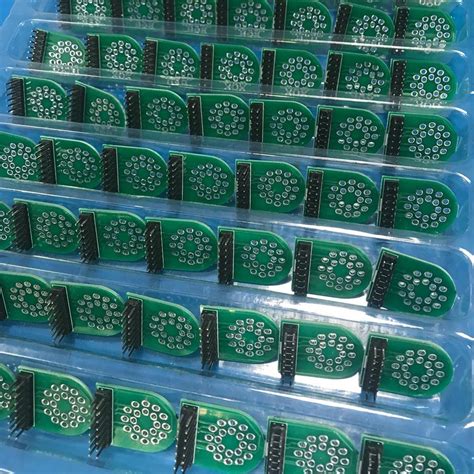
Innovative Materials for Enhanced PCB Performance
In the quest for high-quality PCB assembly, the selection of innovative materials plays a crucial role in determining performance and reliability. Advanced materials such as high-frequency laminates, thermal-resistant substrates, and flexible circuit materials can significantly enhance the overall characteristics of the PCBA. These materials not only improve the electrical performance but also contribute to thermal management and physical durability of electronic devices.
For instance, using low-loss dielectric materials can substantially enhance signal integrity, which is crucial for high-speed applications. Additionally, embracing advanced solder mask technologies can improve moisture resistance and reduce surface defects, thereby ensuring optimum functionality of your PCB assembly in diverse environments.
"Investing in quality materials is key to achieving optimal performance; never underestimate their impact on the final product."
Moreover, innovative additives like nanomaterials bring about enhanced mechanical strength and increased thermal conductivity, further pushing the boundaries of what is achievable in PCBA applications. By integrating these cutting-edge materials into your assembly processes, manufacturers can not only meet but exceed industry standards, thus ensuring that their products stand out in a competitive market while fostering long-term reliability.
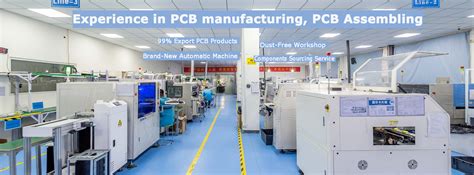
Strategies for Optimizing Assembly Processes
Optimizing pcb assembly processes is critical to achieving superior performance and reliability in electronic devices. One effective strategy is to implement advanced techniques that streamline production and minimize errors. For instance, the integration of automation in the pcba workflow can significantly enhance efficiency while reducing manual handling, which often leads to defects. Furthermore, adopting lean manufacturing principles can help eliminate waste and optimize resource allocation during assembly. Rigorous quality control measures should be established at each stage of production, including real-time monitoring and inspection techniques that identify potential issues before they escalate. Utilizing innovative materials that have better thermal conductivity and electrical properties can also contribute to enhanced performance and durability of the final product. By focusing on these strategies, manufacturers can ensure that their pcb assembly processes not only meet but exceed industry standards, leading to a more reliable and effective electronic solution for consumers.
Testing and Validation of PCB Assemblies
The testing and validation of PCB assemblies (PCBA) are critical steps in ensuring the functionality and reliability of electronic devices. This process encompasses a variety of methodologies designed to evaluate the performance of the pcb assembly throughout its lifecycle. Utilizing advanced techniques such as automated optical inspection (AOI) and X-ray inspection, manufacturers can identify defects early in the production line, significantly reducing the risk of failure in final products. Furthermore, implementing rigorous testing protocols, including functional testing, can confirm that each assembly operates as intended under real-world conditions. It is essential to incorporate both environmental testing, which simulates extreme temperature or humidity levels, and stress testing, which evaluates performance under excessive loads or conditions. These validation processes not only uphold the quality and integrity of the pcb assembly but also bolster consumer confidence in the products they use. By adhering to these stringent testing measures, companies can ensure that their PCBA meets high standards for durability and reliability, ultimately contributing to superior performance in a competitive market landscape.
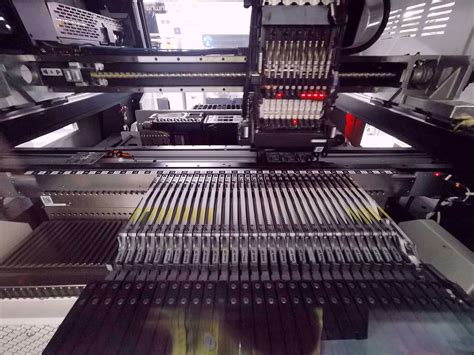
Case Studies: Success Stories in PCB Optimization
Case studies showcasing successful pcb assembly optimization provide valuable insights into the effectiveness of various methodologies employed across different industries. For instance, a leading consumer electronics manufacturer implemented advanced techniques in pcba that streamlined their assembly process, significantly reducing production time while maintaining high-quality standards. By integrating automated inspection systems and statistical quality control measures, they were able to identify defects early, resulting in fewer reworks and a more reliable product. Another notable example is a telecommunications company that adopted innovative materials in their pcb assembly processes. The use of low-loss substrates not only enhanced signal integrity but also contributed to lighter and thinner designs, aligning with market demands for compactness without sacrificing performance. These success stories highlight the intersection of creativity and technology, emphasizing that careful planning and strategy can lead to superior performance in electronic devices through optimization in pcba processes. Ultimately, these case studies serve as inspiration for other companies aiming to enhance their own production methodologies, demonstrating that effective pcb assembly strategies can propel businesses towards success while ensuring the reliability and efficacy of their products.
Conclusion
In summary, successfully optimizing high-quality PCB assembly (PCBA) significantly enhances the performance and reliability of electronic devices. By embracing advanced techniques such as automated assembly and precise soldering methods, manufacturers can achieve a higher level of accuracy in their PCB assembly processes. Furthermore, implementing robust quality control measures throughout the production stage ensures that each component meets rigorous standards, thereby minimizing defects and ensuring durability. The integration of innovative materials also plays a pivotal role in boosting the overall performance of PCBs, as these materials can facilitate better heat dissipation and improve electrical conductivity. Ultimately, a holistic approach that combines these strategies not only leads to optimized assembly processes but also contributes to a strong reputation in the market for delivering high-performance electronic solutions. Emphasizing continuous improvement through testing and validation of PCB assemblies further solidifies the commitment to excellence in PCBA.
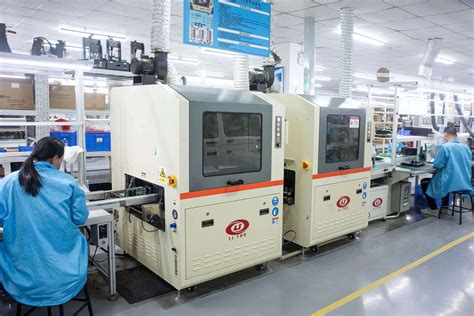
FAQs
What is PCB assembly?
PCB assembly, or PCBA, is the process of soldering electronic components onto a printed circuit board (PCB) to create a functional electronic circuit.
What are the key benefits of high-quality PCB assembly?
High-quality PCB assembly ensures enhanced performance, improved reliability, and longer lifespan of electronic devices, ultimately leading to better end-user experiences.
What advanced techniques are used in PCB assembly?
Techniques such as surface mount technology (SMT), through-hole technology, and automated optical inspection (AOI) are pivotal in achieving high standards in PCBA.
How do quality control measures impact PCB production?
Implementing rigorous quality control measures helps identify defects early in the manufacturing process, significantly reducing waste and enhancing the overall quality of the PCB assembly.
What innovative materials are used for enhanced PCB performance?
Innovative materials like high-frequency laminates, flexible substrates, and lead-free solder alloys contribute to superior electrical performance and increased durability in PCBA applications.
How can companies optimize their PCB assembly processes?
Strategies such as streamlining supply chain management, adopting advanced manufacturing technologies, and regular training for staff can lead to more efficient PCB assembly, thus reducing costs and time-to-market.




